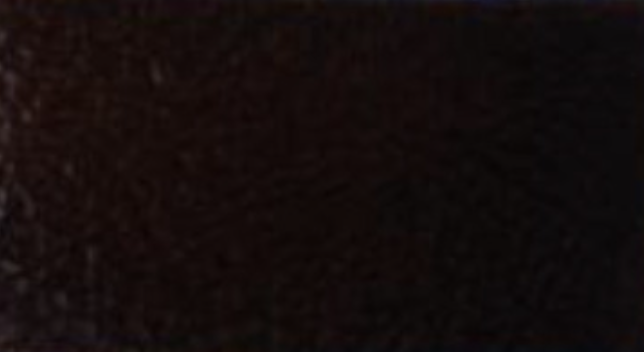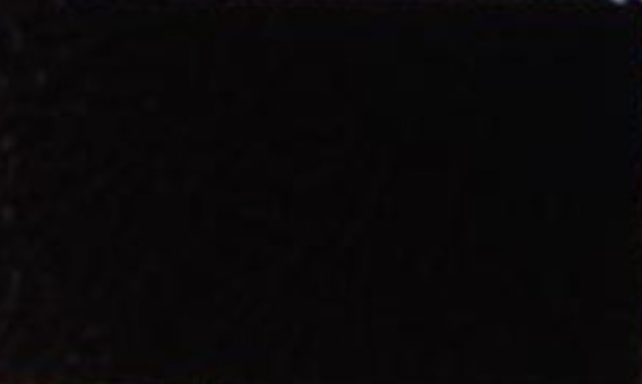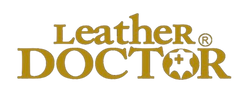![]() Aniline Staining Dye 21 by Leather Doctor® is a new-generation, water-based transparent aniline staining dye based on tannery science principles designed specifically for absorbent leathers, including:
Aniline Staining Dye 21 by Leather Doctor® is a new-generation, water-based transparent aniline staining dye based on tannery science principles designed specifically for absorbent leathers, including:
- Aniline
- Nubuck
- Suede
- Veg-Tan
![]() Dye 21 Key Features:
Dye 21 Key Features:
- Transparent:
- Water-based, transparent, penetrating dye that behaves like traditional tannery stains.
- Brilliant Staining Effect:
- Enhances the natural beauty, depth, and character of the leather grain or nap rather than concealing it.
- Lively, rich color:
- Produces more vibrant and vivid results compared to most conventional liquid dyes.
- Superior lightfastness & fade resistance:
- Offers better UV stability and longer-lasting color than standard liquid dyes.
- Water-based & leather-safe:
- Compatible with Leather Doctor’s tannery science-based care system, ensuring no harm to the leather’s structure or pH balance when used as directed.
- Flexible color shading:
- Can be diluted with distilled water or Leather Hydrator 3.3 for lighter, custom color shades.
Purpose
Aniline Staining Dye 21 is formulated for:
- Re-dyeing faded Aniline leathers
- Reviving color on Nubuck and Suede
- Creating uniform or shaded effects while allowing natural markings and grain to remain visible
- Maintains the natural breathability of absorbent leather.
Application Methods
- Applied using lint-free towels, foam brushes, varnishing brushes, or airbrush (recommended) for best control and evenness without over-wetting.
- Can be layered to build up colour intensity.
Technical Spec Sheet — Aniline Staining Dye 21 by Leather Doctor®
| Specification | Details |
|---|---|
| Product Name | Aniline Staining Dye 21 |
| Type | Water-based, transparent staining dyestuff |
| Designed For | Absorbent leathers: aniline, nubuck, and suede |
| Color Brilliance | Lively, vibrant, more brilliant than conventional liquid dyes |
| Transparency | Transparent — reveals natural grain, pores, or nap |
| Lightfastness | Superior lightfastness and UV fade resistance |
| Dilution Agent | Distilled water; Hydrator 3.3 (for finer control over shading) |
| Application Tools | Lint-free paper towel, plush pad, foam brush, high-quality varnish brush, airbrush |
| Recommended Airbrush Settings | 80-100 psi, fine cone-shaped spray, high atomization, low feed rate |
| Nubuck & Suede Fixing Agent | Dye Fix 99 (fixes and stabilizes dye, prevents crocking) |
| Smooth Leather Topcoat Requirement | Gloss 21 (regular use); Gloss 76 (heavy-duty use) |
| Conditioning | Conditioner B / B Plus (aniline); Conditioner S / S Plus (nubuck/suede) |
| Compatibility | Works within Leather Doctor® tannery science system |
| Safety | Water-based, leather-safe, no harmful solvents when used as directed |
| Customization | Can be layered or diluted to achieve desired tone and intensity |
Guide: How to Mix & Adjust Dye Strength with Aniline Staining Dye 21
Mixing Base Dye
- Standard dye preparation
- Mix Aniline 21 concentrate with distilled water in a 1:9 ratio for base strength.
- Stir gently or shake well to achieve uniform color.
Adjusting Color Intensity
- For deeper, richer color
- Apply multiple light coats rather than increasing concentration beyond.
- Allow drying between coats.
- For lighter shades
- Further dilute with Hydrator 3.3 instead of just water.
- Example: Add Hydrator 3.3 at ratios like 1:1 (dye:hydrator) or even 1:2 for very soft shades.
- This helps achieve softer penetration and shading control, especially important for nubuck/suede.
- Gradient or shading effects
- Vary the dilution during airbrushing.
- Start with a lighter mix for overall tone → finish with base strength for depth where needed.
Best Practice/
- Always test on a hidden area or swatch first to verify the shade.
- Keep a clean lint-free towel handy to blot excess dye.
Comparison Table — Aniline Staining Dye 21 vs. Other Dye Types
| Feature | Aniline Staining Dye 21 | Standard Liquid Dye | Pigment 54 / Pigmented System |
|---|---|---|---|
| Transparency | Transparent — shows grain/nap | Semi-transparent or opaque | Opaque — conceals imperfections |
| Color brilliance | High — vivid and lively | Medium — often duller | Even, solid color |
| Fade resistance (UV) | Superior lightfastness | Generally lower | High — excellent UV resistance |
| Surface build-up | None — dyes into structure | Minimal build-up | Builds coating on surface |
| Application method | Staining, airbrush or hand application | Brushing, sponge, airbrush | Requires primer, spray gun recommended |
| Feel (when dry) | Natural, soft | Natural to slightly dry | Slightly heavier, coated feel |
| Repair camouflage ability | Low — defects/stains may still show | Low to moderate | High — hides defects and stains |
| Grain character visibility. | High — enhances natural grain | Moderate | Low — conceals grain |
| Best for | High-end aniline, nubuck, suede refinishing | General aniline/nubuck recoloring | Heavily worn, pigmented, or corrected grain leather |
| Topcoat / Dye Fix required | Yes — locks dye, prevents crocking/bleeding | Often yes | Always — seals pigment layer |
How to dye smooth leather with Aniline Staining Dye 21?
Degreasing:
- Degreaser 2.2 is used to remove the presence of body grease and oil, especially in those body contact areas.
- Soft 3.8 is used to clean over Degreaser 2.2 and feather out to the edge of the panel with an even appearance.
- Rinse 3.0 is used to remove suspended soiling.
- Acidifier 2.0 is used to control bleeding.
Stain Removal:
- Stains are removed accordingly, otherwise, the darkest stain becomes the lightest color choice just to camouflage it, especially when working with transparent dyestuff the beauty of the grain and the blemishes both equally will show through.
Pre-inspection for Surface Tension:
- Hydrator 3.3 is used to inspect for any surface tension, especially in heavily used areas.
Surface Soil Removal:
- A leather eraser or Eraser 4 is used in addition to a horsehair brush to remove suspended dry soiling.
Dye Staining:
- Dye 21 staining can be applied with lint-free paper towels, plush, foam, or high-quality varnishing brushes; without surface contact, airbrushing produces the best result.
- Fast dry with an air blower and the surface is inspected for evenness or correction until satisfaction.
Leather Hydrating:
- Hydrator 3.3 is used to relax the leather before fatliquoring.
Leather Softening:
- Fatliquor 5.0 is used to replenish the leather with fat and oil for softness when the leather dries
Repair:
- Adhesor 73 is used to smooth surface wear and abrasion by sight or by the feel of the hand.
- Glue 3D is used to bond flaps and tears.
- Patch 4S is used as a repair sub-patch.
Topcoating:
- Gloss 21 is used to lock in the dyestuff from crocking and bleeding.
- A heavy-duty version is to use Gloss 76.
- High Gloss 3V is a water-based fine urethane-resin emulsion clear topcoat with a brilliant gloss.
Crosslinking:
- Crosslinker 64 is a high-solid hardener to strengthen and toughen leather topcoats, particularly those that have become tacky or sticky over time.
Non-Stick Protection:
- Use Conditioner B or B Plus.
What is the General Sequence of Re-dyeing for Nubuck and Suede with Dye 21?
- The general sequence is similar with leather except for the brushes, erasers, and airbrushing accordingly.
- Nubuck - use a Brush 2, Eraser-4, and Conditioner S or S Plus
- Nappa-Suede - use Brush 2, Eraser 4, and Conditioner S or S Plus.
- Split-Suede - use Brush 3 and or Eraser 5 and Conditioner W or W Plus.
How to Airbrush Nubuck and Suede with Aniline Staining Dye 21?
- Staining is done with airbrushing with better control for distributing dyestuff to produce the best result.
- Set air pressure (80 to 100psi).
- Adjust to cone-shaped spray.
- Increase atomization and decrease feed.
- Spray in a circular motion with deep brushing without saturation.
- Repeat a section at a time and brush accordingly.
- Brush again when dry for a “finger writing effect”.
- Fix dye with Dye Fix 99, by repeat airbrushing application.
- Hydrate with Hydrator 3.3 to relax and extract excess dye.
- Fatliquoring with Fatliquor 5.0, let water content evaporate, and reapply to satisfaction when dry.
- Any surface residue from Fatliquor 5.0 is removed by wiping with Hydrator 3.3 and leave to natural dry.
- Conditioner S or S Plus is applied and is ready to use when dry.
Dye Color Shading Examples:
Ready to use Dye 21 after mixing with distilled water can be further diluted with Hydrator 3.3 to the desired color shade accordingly.

#1 Dye 21 with 3 parts Hydrator 3.3

#2 Dye 21 with 2 parts Hydrator 3.3

#3 Dye 21 with 1 part Hydrator 3.3

#4 Dye 21
Edited on March 26, 2024 | July 4, 2025 | November 27, 2024 by Roger Koh




